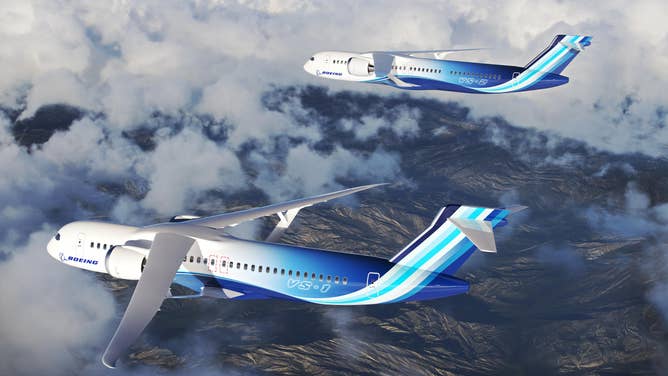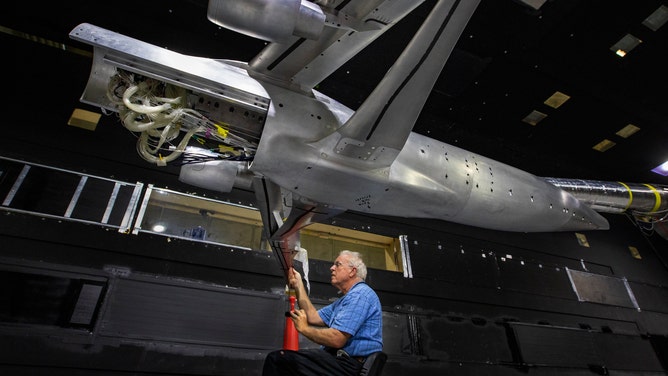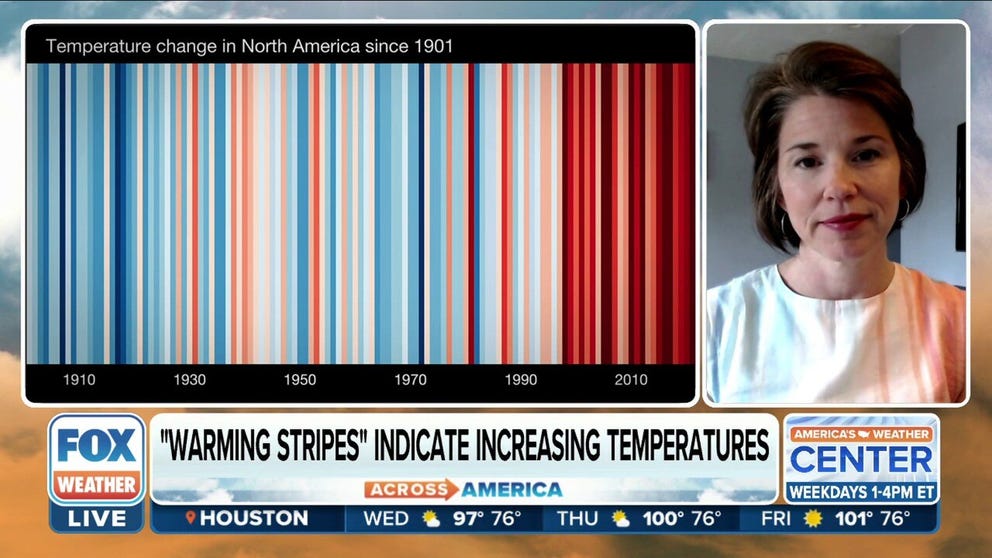Development of a fuel-efficient jetliner could significantly reduce emissions
If research is successful, developed technologies could be employed in the aviation industry in the 2030s. The Transonic Truss-Braced Wing aircraft could reduce fuel emissions by up to 30 percent.
How a colorful graphic indicates a global warming trend
Bernadette Woods-Placky, Climate Central Meteorologist, on the importance behind Show Your Stripes Day.
WASHINGTON – NASA announced Wednesday the partnership of a multimillion-dollar contract that they believe could lead to the production of a new fleet of aircraft that could reduce fuel emissions by up to 30 percent.
The agency said the $425 million contract with Boeing will be matched by more than $700 million in private investments to continue developing the Sustainable Flight Demonstrator program.
The goal is to develop an aircraft that will create less drag and result in burning less fuel – a milestone that would aid in the industry’s march towards reaching net-zero carbon emissions by 2050.
"Since the beginning, NASA has been with you when you fly. NASA has dared to go farther, faster, higher. And in doing so, NASA has made aviation more sustainable and dependable. It is in our DNA," NASA Administrator Bill Nelson said in a statement. "It’s our goal that NASA’s partnership with Boeing to produce and test a full-scale demonstrator will help lead to future commercial airliners that are more fuel efficient, with benefits to the environment, the commercial aviation industry, and to passengers worldwide. If we are successful, we may see these technologies in planes that the public takes to the skies in the 2030s."

Artist concept of a commercial aircraft with a Transonic Truss-Braced Wing configuration.
(Boeing / FOX Weather)
BOEING 757 PASSENGER AIRCRAFT TO BE REPURPOSED INTO A FLYING FIRE TRUCK
Initial concepts involve developing an aircraft with extra-long, thin wings stabilized by diagonal struts – a design that is unique and has never employed by the commercial aviation industry.
Engineers said the transonic truss-braced wing design has been in development for more than a decade and aims to capitalize on an increased lift and reduced drag.
"The SFD program has the potential to make a major contribution toward a sustainable future," Greg Hyslop, chief engineer at Boeing, said in a statement. "It represents an opportunity to design, build and fly a full-scale experimental plane, while solving novel technical problems."
Project testing is expected to last up to seven years, and if proven airworthy, the first single-aisle aircraft could enter into commercial service during the 2030s.

Engineers create a transonic truss braced wing model.
(NASA)
SECRET SPACEPLANE RETURNS TO EARTH SENDING SONIC BOOMS ACROSS FLORIDA
NASA said single-aisle aircraft are the workhorses of the industry and account for almost half of the aviation emissions.
The contract is only one part of a multi-development approach to making flying cleaner and more sustainable - other research under NASA’s Sustainable Flight Demonstrator program includes improvement of manufacturing, increasing propulsion, developing cleaner fuels, and improving air traffic management techniques.
